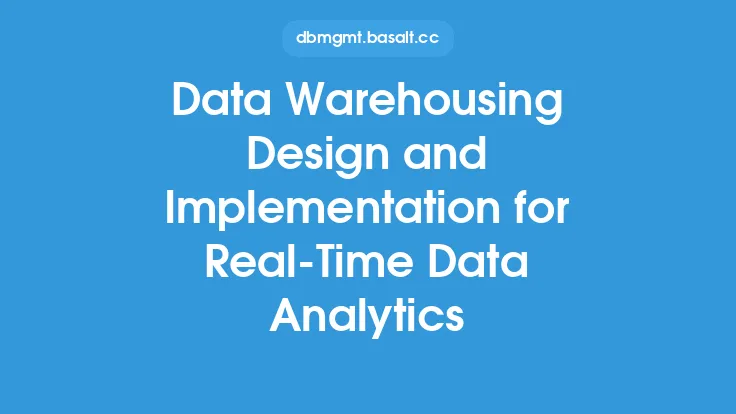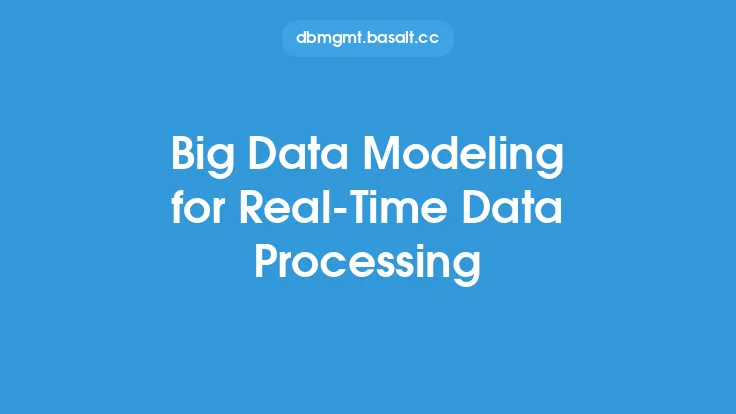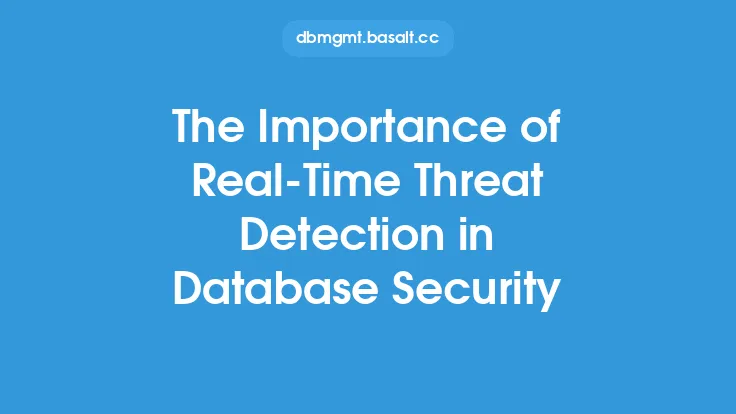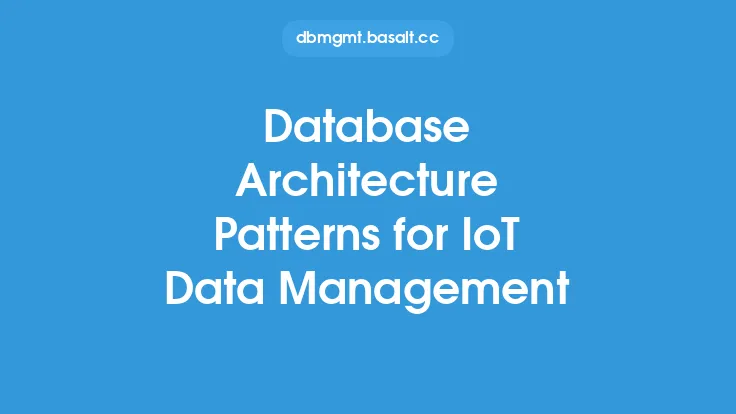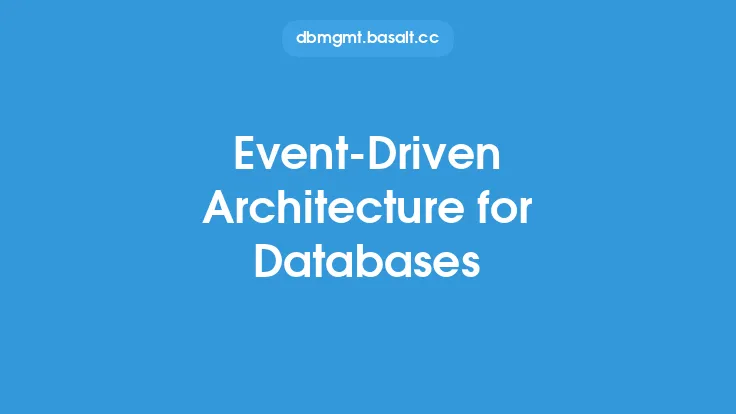Designing a database architecture for real-time analytics requires careful consideration of several factors, including data ingestion, processing, storage, and querying. The primary goal of such an architecture is to provide fast and accurate insights into ongoing events, enabling businesses to make informed decisions in a timely manner. To achieve this, a well-designed database architecture for real-time analytics must be able to handle large volumes of data, process it quickly, and provide fast query performance.
Key Components of Real-Time Analytics Database Architecture
A typical database architecture for real-time analytics consists of several key components, including data ingestion tools, message queues, stream processing engines, NoSQL databases, and data visualization tools. Data ingestion tools are responsible for collecting data from various sources, such as social media, sensors, or applications, and sending it to a message queue for processing. Message queues, such as Apache Kafka or Amazon Kinesis, provide a buffer for handling high volumes of data and ensure that data is not lost in case of failures. Stream processing engines, such as Apache Storm or Apache Flink, process the data in real-time, performing tasks such as data cleaning, filtering, and aggregation. NoSQL databases, such as Apache Cassandra or MongoDB, store the processed data, providing fast query performance and high availability. Finally, data visualization tools, such as Tableau or Power BI, provide a user-friendly interface for exploring and analyzing the data.
Data Ingestion and Processing
Data ingestion and processing are critical components of a real-time analytics database architecture. Data ingestion tools must be able to handle high volumes of data, provide low-latency data transfer, and ensure data integrity. Stream processing engines must be able to process data in real-time, handling tasks such as data cleaning, filtering, and aggregation. To achieve this, stream processing engines often use techniques such as windowing, which involves processing data in fixed-size chunks, and watermarking, which involves tracking the progress of data processing. Additionally, stream processing engines must be able to handle late-arriving data, which can occur when data is delayed due to network issues or other factors.
Data Storage and Querying
Data storage and querying are also critical components of a real-time analytics database architecture. NoSQL databases are often used for storing real-time data, as they provide fast query performance, high availability, and flexible schema design. NoSQL databases such as Apache Cassandra and MongoDB use a distributed architecture, which allows them to scale horizontally and handle high volumes of data. Additionally, NoSQL databases often use techniques such as data replication and partitioning, which ensure data availability and improve query performance. To provide fast query performance, NoSQL databases often use indexing techniques, such as secondary indexing and composite indexing, which enable fast data retrieval.
Data Visualization and Exploration
Data visualization and exploration are essential components of a real-time analytics database architecture. Data visualization tools provide a user-friendly interface for exploring and analyzing data, enabling users to gain insights into ongoing events. Data visualization tools such as Tableau and Power BI provide a range of visualization options, including charts, tables, and maps, which enable users to explore data from different perspectives. Additionally, data visualization tools often provide features such as filtering, drilling down, and data storytelling, which enable users to gain deeper insights into the data.
Best Practices for Designing Real-Time Analytics Database Architecture
Designing a real-time analytics database architecture requires careful consideration of several best practices. First, it is essential to choose the right data ingestion tools, message queues, stream processing engines, and NoSQL databases for the specific use case. Second, it is crucial to design a scalable architecture, which can handle high volumes of data and provide fast query performance. Third, it is essential to ensure data integrity and availability, using techniques such as data replication and partitioning. Fourth, it is important to provide a user-friendly interface for data visualization and exploration, using tools such as Tableau or Power BI. Finally, it is crucial to monitor and optimize the architecture continuously, using metrics such as latency, throughput, and query performance.
Common Challenges and Solutions
Designing a real-time analytics database architecture can be challenging, and several common issues can arise. One common challenge is handling high volumes of data, which can cause latency and impact query performance. To solve this issue, it is essential to design a scalable architecture, using techniques such as data partitioning and replication. Another common challenge is ensuring data integrity and availability, which can be achieved using techniques such as data replication and watermarking. Additionally, providing a user-friendly interface for data visualization and exploration can be challenging, which can be solved using tools such as Tableau or Power BI. Finally, monitoring and optimizing the architecture continuously can be challenging, which can be achieved using metrics such as latency, throughput, and query performance.
Future Directions and Trends
The field of real-time analytics database architecture is constantly evolving, with new technologies and trends emerging continuously. One future direction is the use of cloud-native technologies, such as serverless computing and cloud-based data warehouses, which provide scalable and cost-effective solutions for real-time analytics. Another future direction is the use of artificial intelligence and machine learning, which can be used to improve data ingestion, processing, and querying. Additionally, the use of edge computing and IoT devices is becoming increasingly popular, which requires real-time analytics database architectures to be able to handle data from edge devices. Finally, the use of graph databases and knowledge graphs is becoming increasingly popular, which can be used to provide more accurate and insightful analytics.
